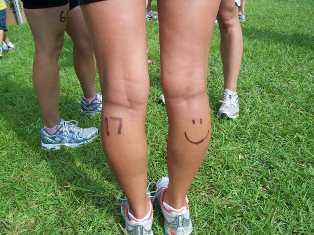How To Plan Your Triathlon Season for success
Posted by Matt Russ on 16th Nov 2016
 This is an excellent time of year to consider what you would like to
accomplish athletically in the next. As with many things, planning is the key
to accomplishment for your race season.
This is an excellent time of year to consider what you would like to
accomplish athletically in the next. As with many things, planning is the key
to accomplishment for your race season.
If you are a recreational athlete, and your goal is simply to complete your events, then you only need to train one aspect of fitness; endurance. This entails planning enough time to slowly build your mileage to within about 10-15% of the distance of your goal race. Note that many overuse injuries are caused by too much mileage too quickly. Do not increase your duration more than 10% per week and take at least every fourth week as a rest and recovery week. During a rest and recovery week you should cut back your mileage by at least 25%, reduce your overall training volume, and add in an extra rest or active recovery day. If you are a runner take a day of non-impact cross training in place of a run.
Competitive athletes, however, must take a different approach. A competitive athlete by my definition is any athlete that sets a specific performance goal. This may be a simple as a personal record. You do not have to win races to be competitive. If you would like to set a personal record or race placement goal this season it will require more careful planning and organization of your race events. Start by prioritizing them into A, B, and C events.
Your "A" events are the ones you will direct your training efforts towards. For best results they should be similar or the same format (ex. sprint triathlon). These are your main goals for the season and your training should gradually progress towards these races or events. Put these on your calendar first. Note that A races take time to train for. Plan on taking at least 12 weeks of specific and directed training for an A races; this is called "peaking." Schedule your A races in 4 week clusters or separate them by at least 10-12 weeks. If your race is an ultra endurance event such as a half Ironman or Ironman this will be your only peak race for that period. Your training should ramp in intensity and specificity as you approach your A races. Your last work outs prior to your A race taper should closely mimic race intensity and format.
What is a taper? Tapering means reducing training volume prior to a goal race in order to facilitate total and complete recovery. Generally you should incorporate a taper a week or two prior to A race(s). The length of the taper will depend on the length of your event; the longer the event the longer the taper length. An Ironman will require a taper of up to 4 weeks. From a training stand point there is nothing you can do the week of a goal race to physiologically increase performance but there are many opportunities to reduce it. After completing an A race plan on taking a week of active rest and recovery.
B events are training events you would like to do well at but are not goal races. B events are excellent warm ups for A events. They are an opportunity to test and hone your race skills without the pressure of an A event. B events do not have to be the same format as an A event but should help contribute to your A race performance. You still want to give 100% for a B event. An example would be a 10k running event prior to an Olympic distance triathlon. You should rest or reduce your training load a few days before a B event but do not taper as you would for an A event. Be careful not to overschedule B events. Although you are not training for them specifically, any race will require considerable recovery time and may take valuable training time away from your peak event.
C events are fun events you enjoy doing but are not goal related. These are good events to leave the heart rate monitor at home for. You do not have to push yourself physically during these events or have any performance objectives. I like my athletes to schedule C events during their base training to keep their enthusiasm up. C events can be completely different from your A events. If you runner you could do 50 mile cycling event for charity. C events keep you active and interested in training.
A good place to start is with a 12 month calendar. Put your A races on first, then proceed to B and C. It is important not to schedule C events close to your goal events. This time is reserved for more specific and directed training. Not only does prioritizing your races help with your training, it helps identify what you would like to accomplish as an athlete. Don't let your races sneak up on you!
Matt Russ is a professional coach with over two decades of experience working with athletes up to the professional level. His athletes have achieved numerous regional, national, and international titles under his direction. Matt has achieved the highest level of licensing by both USA Triathlon and USA Cycling, and is a licensed USA Track and Field Coach. His accomplishments include being named "Team USA" Coach by USA Triathlon. Matt is Head Coach and owner of The Sport Factory, a USA Triathlon Certified Performance Center located in Roswell, Georgia. Visit www.sportfactory.com for more information or email him at coachmatt@sportfactory.com


